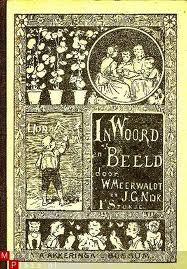This Meerwaldt origins and history page contains the contributed history of the Meerwaldt surname made up of user-submitted content from other AncientFaces users. Meerwaldt family history has a rich and complex origin of which the particulars can be pieced together by Meerwaldt family researchers. The last name Meerwaldt is an old heredity that has spread all across the world over time, and as the name Meerwaldt has spread, it has changed making it’s etymology challenging to unearth.
The evolution of Meerwaldt begins with the origins of thesurname. Even in the early generations of a name there are variations in that single name simply because family names were infrequently written down back when few people could write.It was common for a surname to change as it enters a new country or language. As these families moved between countries and languages, the Meerwaldt name may have changed with them. Meerwaldt family members have migrated around different countries all throughout history.
Meerwaldt country of origin
The nationality of Meerwaldt is often very difficult to determine because country boundaries change over time, making the original nationality indeterminate. The original ethnicity of Meerwaldt may be difficult to determine depending on whether the name came in to being organically and independently in various locales; e.g. in the case of family names that are based on a profession, which can appear in multiple countries independently (such as the family name “Carpenter” which was given to woodworkers).
Meaning of the last name Meerwaldt
The meaning of Meerwaldt come may come from a profession, such as the name “Fisher” which was given to fishermen. Many of these trade-based surnames may be a profession in another language. Because of this it is essential to understand the ethnicity of a name, and the languages used by it’s ancestors. Many western names like Meerwaldt originate from religious texts like the Bhagavadgītā, the Quran, the Bible, and so forth. Often these surnames relate to a religious phrase such as “Grace of God”.
Nationality and Ethnicity of Meerwaldt
We do not have a record of the primary ethnicity of the name Meerwaldt. Many surnames travel around the world throughout the ages, making their original nationality and ethnicity difficult to trace.
Meerwaldt spelling variations
In the past, when few people knew how to write, names such as Meerwaldt were transcribed based on how they were heard by a scribe when people’s names were recorded in government records. This could have given rise misspellings of Meerwaldt. Understanding spelling variations and alternate spellings of the Meerwaldt name are important to understanding the history of the name. Names like Meerwaldt vary in their pronunciation and spelling as they travel across villages, family unions, and countries over the years. / http://www.ancientfaces.com/surname/meerwaldt-family-history/2783473
J. Meerwaldt
From the time of the PGKB’s founding in 1919, it published Siadjipanoetoeri as a means of communication. Initially its editor was J. Meerwaldt (a son of J.H. Meerwaldt, who was a teacher at the Narumonda seminary beginning in 1915, but later he moved to the HIS in Narumonda and afterwards to the Sipoholon seminary). But he resigned a year later in 1920 because he felt that most of the teachers’ writings were too political, of the same tone as the HKB’s, and were not directed towards the advancement of education. However, the Batakmission leaders did not fully concur with his wishes, and he continued to remain a member of the editorial board. After that, the board’s leader-ship was in the hands of Batak teachers. There were also Batak teachers who were not in agreement with the content of the bulletin, i.e. they did not support the independence movement. They thought that the contents “bared too much of itself”, namely the diffi-cult life of the teachers rather than holding up ministry in congregation and school.
In addition to nurturing congregational workers, the Batakmission also gave attention to the nurturing students as part of a program to hinder the negative impact of modern culture, and also to stimulate the intellectual side of the Christian youth. For this purpose and in cooperation with the German and Dutch YMCAs, in 1916 the Batakmission brought in Dr. E. Verwiebe as a specialist in young people’s affairs (in 1936-1940 he became Ephorus). Thanks to this effort, a Batak Christian youth and student organization affiliated with the YMCA was formed in both the Batak area and in places where young people had moved. Each year during the long vacation this organization held a meeting in the Batak area period for the purpose of nurturing the young people in the Gospel. Moreover, in 1934, the group organized its own schools.118 For the Batakmission, the nurturing of students and youth was an integral part of its whole educational ministry and the meetings which it organized were viewed as most effective for “education for thinking ecclesiastically”.119 This program went on in parallel with programs announced in 1921 for special age groups such as men, women, young women and men, and children, but it became really operational about the middle of the 1930s. From this we see that the Batakmission’s educational ministry was not only conducted through schools, but also through various programs of nurture.
